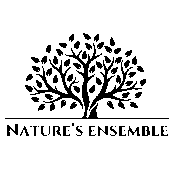The urban nature connection is more than a passing trend—it’s a transformative pathway for thriving, sustainable cities. As urbanization accelerates globally, forging deeper bonds between people and urban green spaces has become essential for human well-being, biodiversity, and climate resilience. Whether through parks, green rooftops, or the wildflowers in neglected lots, urban nature connection invites city dwellers to experience the beauty, calm, and vitality of the natural world—right where they live.
Why Urban Nature Connection Matters
Living in cities can often detach people from the rhythms of nature, leading to higher stress, reduced community feeling, and even poorer physical health. Research consistently shows that restoring the urban nature connection:
- Boosts mental health by reducing stress and anxiety
- Increases physical activity through accessible green infrastructure
- Provides cleaner air and mitigates the urban heat island effect
- Fosters social cohesion and a stronger sense of community
A recent study found that a strong connection to nature affects life satisfaction up to four times more than socioeconomic status. Imagine the impact when every city dweller feels at home in nature, and nature thrives in every city.
Benefits of Urban Nature for Communities
Mental and Emotional Well-being
Access to green spaces—whether large parks or pocket gardens—significantly reduces stress and depression. Even brief moments in urban nature can spark positive emotions: calm, joy, creativity, and a sense of belonging.
Physical Health Improvements
- Urban parks and tree-lined streets invite walking, cycling, and recreation, which reduce rates of obesity, diabetes, and cardiovascular disease.
- Vegetation filters urban air pollution, leading to fewer respiratory problems.
- Green spaces lower local temperatures, making cities more livable during heatwaves.
Social Cohesion
Communal gardens, shared parks, and local restoration projects foster collaboration, reduce loneliness, and build resilient neighborhoods.
Expanding Perspectives: Where to Find Urban Nature
While major parks are vital, don’t overlook smaller, sometimes “accidental” forms of urban nature:
- Railway line verges, wildflower patches, unmown lawns, and vacant lots all support biodiversity and human encounters with nature.
- Green roofs, living walls, and rooftop gardens expand greenery into dense cityscapes.
- Even narrow street verges and community planters offer opportunities to reconnect.
Cities like Barcelona (with its “superblocks”), Singapore (therapeutic gardens), and New York (High Line linear park) pioneer innovative models—proving that any city can nurture the urban nature connection.
How to Deepen Your Urban Nature Connection
Everyday Actions
- Visit Parks or Gardens: Schedule regular walks in your nearest green space. Notice the seasonal changes, listen for birds, and take in the fresh air.
- Explore Offbeat Nature: Discover hidden habitats in neglected lots, green alleys, or along railway tracks.
- Appreciate Urban Wildlife: Watch city birds, squirrels, or insects. Consider joining local citizen science or wildlife spotting initiatives.
- Try Rooftop or Balcony Gardening: Grow native plants, herbs, or pollinator-friendly flowers—even a small window box can help.
Engage with Community Initiatives
- Join local greening or restoration projects
- Advocate for more, and more equitable, green spaces in your neighborhood
- Participate in city-led eco-education or urban farming programs
Building Greener, Healthier Cities
Cities around the globe are embracing urban nature connection as a powerful strategy for health, sustainability, and resilience. Nature-based solutions (NbS)—like urban forests, wetlands restoration, and green social-ecological corridors—address urgent urban challenges:
- Climate adaptation and mitigation
- Biodiversity conservation
- Water and food security
- Improved air quality and disaster risk reduction
Such solutions not only restore ecosystem services but help city dwellers rediscover their role as stewards of the natural world.
“People and nature benefit when the natural environment in and around cities is enhanced.” — WWF
For practical, local examples, see inspiring city projects at CitiesWithNature and WWF’s NbS case studies.
Internal Links for Further Reading
- How Green Spaces Heal: Urban Parks and Mental Wellbeing
- Practical Steps Toward Regenerative City Living: A Guide for Urban Dwellers
- Community Gardens: Growing Food and Connection in Cities
